Asian banks power ahead:Clever strategies, niche appeal and foreign alliances raise the profits and prestige of financial institutions across the vast continent.
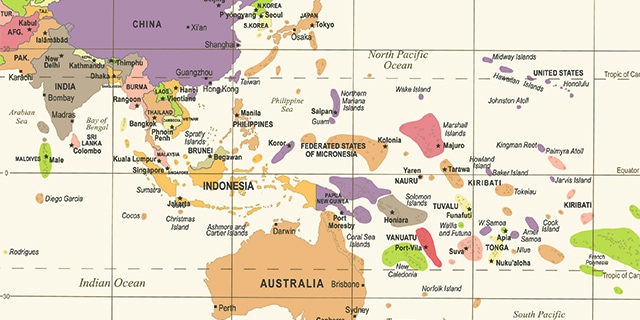
Asia’s banking industry enjoyed extraordinary growth over the past decade. Total assets at the region’s banks soared by a heady 70% since the global financial crisis unfolded in 2008. The Asian banking system now houses 40% of total global banking assets, up from 27% in 2009.
High returns on equity, stable net interest margins (NIM) and increased year-on-year profits were notable across the Asian banking sector in 2017. Still, some potential dark shadows loom on the horizon in the form of US protectionism, new accounting standards demanding a more stringent approach to risk management and the potential for capital flight as US interest rates rise. Asia’s banking system, though, appears primed to meet these challenges.
“A further escalation of protectionist sentiment and trade wars could negatively affect the economic output of some very open and trade-dependent economies in [Asia-Pacific],” says Singapore-based Eugene Tarzimanov of Moody’s Financial Institutions Group. “Specifically, much slower trade could lead to weaker corporate cash flows, again raising the risk of higher credit delinquencies. But these are tail risks, and banks in APAC generally have good buffers in terms of capital and credit provisions.”
Certainly our regional winner, DBS Bank, is in a strong position following a record-breaking 2017. After its digestion of the ANZ acquisition, the bank’s wealth management segment achieved income growth of 25%, according to CEO Piyush Gupta, while small and mid-sized companies drove growth in its SME business of 11%. “We are acquiring more customers and deepending existing relationships,” Gupta says, while pointing to Hong Kong and Greater China as having delivered better-than-average growth.
In China, the banking industry experienced a comeback year in 2017, with profits at the so-called Big Five—which control around a third of the country’s $40 trillion banking assets—posting their strongest increase in three years. China Construction Bank, the country’s second-largest lender by assets, has demonstrated great consistency in delivering results, built on its robust deposit franchise, focused management of non-performing loans (NPLs) and wallet enhancement stemming from widening loan spreads.
CCB enjoys high capitalization ratios and, in the year ended September 2017, delivered return on equity (ROE) of 16.5%, the highest among China’s top five state-owned banks, while its NIM widened 8.3% last year and is expected to hit 12 basis points in 2018, according to analysts at Morgan Stanley. That would be 30% to 100% higher than rivals ICBC and Bank of China.
CCB’s electronic-banking fee income surged by 23% last year as the bank continued to build its presence at the center of China’s rapidly developing online financial ecosystem.
Meanwhile, income from settlement and clearing fees pushed up by almost 5% thanks to the introduction of innovative products, most conspicuously the Going Global program, which boosted fee income from international settlements.
In Japan’s banking industry, the process of streamlining and consolidation—necessitated by the asset bubble of the late 1990s—continued in 2017. But lending margins have been hurt by ultra-low interest rates and an aging population.
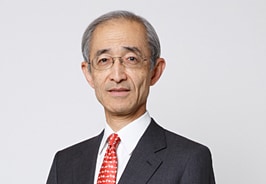
Nobuyuki Hirano, Mitsubishi UFJ Financial Group CEO |
Japan’s lopsided demographic mix is Asia’s most challenging, and has resulted in reduced demand for loans. The industry thus faces the cutthroat environment of technological innovation, in which non-banks are eating into the oligopoly long enjoyed by the country’s big banks in settlement and money transfer.
Mitsubishi UFJ Financial Group (MUFG), Japan’s largest bank, announced its “Re-Imagining” strategy in the middle of last year, under which the megabank hopes to optimize its sprawling structure with the aim of offering client services as a single group.
The challenges posed by Japan’s prevailing rates were manifested in MUFG’s top-line performance last year. Gross operating profits were almost unchanged due to a decline in NIM from domestic loans and decreased returns on the bank’s bond portfolio. Still, NPLs declined and now stand at a manageable 0.95%, while profits rose on a consolidated basis.
MUFG’s pursuit of growth through acquisitions was underscored in 2017 with its purchase of a stake in Indonesia’s Bank Danamon. Internationalization in the face of a less-than-auspicious domestic backdrop is MUFG’s overt strategy.
Australia’s banks reported a 6.4% profit increase in 2017, something of an achievement in the face of tepid national economic growth, pressure on margins and rising capital costs. The average ROE in the industry was 13.9% for the year—a scant 0.15% gain versus the previous year—as rising capital requirements bit into returns.
At Westpac, profits beat the industry average in 2017, rising by 7% to $7.9 billion, while ROE and Tier 1 capital were within targets at 13.8% and 10.6%, respectively.
The bank’s aim in 2017 was to balance growth and returns while improving the credit quality of its loan portfolio and meeting the stable funding requirements that were initiated in January.

Brian Hartzer, Westpac CEO |
Westpac’s consumer and business bank segments delivered solid earnings growth, as the New Zealand subsidiary benefited from rising credit quality. Most notably, the bank’s investment in digital technology paid off last year, with its Panorama wealth management system pulling in 4 billion Australian dollars ($3.1 billion) of new funds and its digital customer-service hub achieving a key milestone as it facilitated the bank’s first originated mortgage under the digital franchise.
New Zealand’s ASB Bank—owned by Australia’s Commonwealth Bank—recorded recorded profits of 1.1 billion New Zealand dollars ($770 million) in 2017, versus NZD$913 million in the previous year, something of an achievement in a tight and highly competitive banking market.
This stellar result was largely the result of a drop-off in bad loans, due not only to a recovery in the country’s structurally significant dairy sector, but also to an increase in loans, which grew 8% in 2017 versus a 6% rise in deposits.
Shinhan Bank, South Korea’s biggest lender in terms of assets and market capitalization, has 150 branches throughout 20 countries. Net income in 2017 through the third quarter was up an eye-catching 25%.
The bank expanded last year into Vietnam via the purchase of ANZ’s retail operation, and is keeping up to speed with South Korea’s digital ecosystem via its Sunny Bank mobile platform.
Shinhan even demonstrated a gladiatorial commitment to the country’s cryptocurrency obsession by launching a bitcoin vault late last year and collaborating in January 2017 with Ripple Labs to use the xRapid system for cross-border payments via blockchain technology.
Taiwan’s Cathay United Bank is embarking on aggressive expansion into Asia, utilizing its broad range of products for the cross-sell. It has offices in nine South Asian countries, for the biggest overseas presence of any Taiwanese lender.
The bank remains Taiwan’s biggest wealth manager, has the largest share of securities brokerage settlement in the island state and is its second-largest credit card issuer.
Cathay United pulled in $150 million of commissions via its insurance division, and dominates the digital banking space in Taiwan with its MyMobiBank and MyB2B platforms. The bank operates the third-highest number of ATMs in Taiwan, and that number is set to climb as it collaborates with Family Mart to establish kiosks in their shops.
In India, banks are saddled with toxic loans. Non-performing assets grew 250% between 2015 and 2017 as lending growth in the banking sector slumped to a 25-year low.
To address the sector’s chronic problems, the Indian government last year stepped in with a $32 billion recapitalization of public-sector banks and is engaged in a reform program intended to amalgamate banks, as was done in Japan.
As a precursor, State Bank of India last April merged with five peers in what represented Indian banking’s largest amalgamation exercise, creating one of the 50 largest banks in the world with 420 million customers and a projected 22% market share.
Mumbai-headquartered SBI has been on a major digitization push, a dynamic that was boosted last year by the Indian government’s demonetization program, which energized the digital-banking sector.
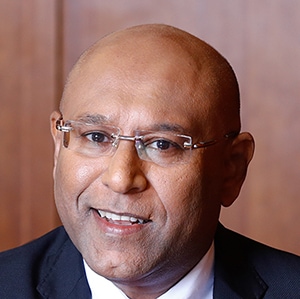
Dimantha Seneviratne, NDB Bank CEO |
SBI’s branch banking declined last year to 23% of overall transactions from 26% in 2016, while internet banking rose from 23% to 27% alongside a surge in point-of-sale banking, from 5% to 9%.
Across the Palk Strait, National Development Bank had an exceptional year. Post-tax profit grew by 37% thanks to the expansion of total assets, loans and customer deposits, beating the industry trend in Sri Lanka.
“Severe competition is one key challenge in the Sri Lankan banking industry,” says CEO Dimantha Seneviratne. “Banks are increasingly under continuous pressure to outperform competition in product features and pricing.”
Malaysia’s Maybank, aiming to become Southeast Asia’s digital bank of choice, prioritized environmental, social and governance (ESG) concerns in its mission statement. Moreover, Datuk Mohaiyani Shamsudin last year became the first female head of what is Malaysia’s largest publicly listed company. Maybank’s digital ambitions were bolstered last year through its partnership with China’s Alipay, the launch of Maybank2u Pay and other fintech initiatives.
In 2017, Maybank posted a 10.9% ROE and profits rose to 7.5 billion Malaysian ringgit ($1.9 billion) from MYR6.7 billion in the previous year.
The Philippines’ Security Bank continued to deliver results which exceeded its peers despite a relatively modest market share. Its consistently solid performance helps explain Mitsubishi UFJ’s decision in 2016 to take a 20% stake in the bank.
ROE was a solid 10.2% in 2017 and revenue and earnings growth each came in at 20%. Security Bank is known for delivering differentiated value to niche markets under its BetterBanking brand, which is built on speedy paperless branch transactions and digital banking via its mobile and online portals.
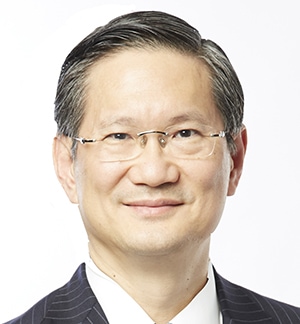
Chartsiri Sophonpanich, Bangkok Bank CEO |
In Thailand, Bangkok Bank, the country’s largest corporate lender, set a high bar for an industry suffering the effects of deflation amid a backdrop of relatively sluggish economic growth. Deposit growth in 2017 was a healthy 6.1% and loan growth came in at 3.2%, resulting in a 16% market share. The bank also managed to boost its common equity Tier 1 ratio by 1%, to a solid 16.6%.
“As Thailand’s leading corporate bank and a major regional bank, we help clients tap into opportunities such as Thailand’s major infrastructure-development program and international markets,” says CEO Chartsiri Sophonpanich.
Profits grew 3.9% versus an industry contraction of 5.7%, and ROE was a solid 8.5%, reflecting the bank’s international reach. It is the only Thai bank with a local presence in China.
Bank Islam Brunei Darussalam (BIBD) is the sultanate’s highest rated bank, with an A- from S&P. It enjoys a hefty 83% market penetration in retail banking, which accounts for almost 40% of the bank’s total income via 16 branches and 95 self-service terminals.
The bank is also active in corporate banking and invests directly in money markets, Islamic sukuk products and across fixed-income markets.
BIBD’s International Banking Group manages relationships within the ASEAN bloc and further afield in the Middle East.
Singapore’s OCBC reaped the rewards of its geographical and sector lending diversity in 2017, achieving a 19% profit increase via a record 4.2 billion Singapore dollars ($3.2 billion) take. Net interest income rose 7% and each of the bank’s major subsidiaries reported higher local earnings, contributing to boosting ROE by 1.2% to 11.2%.
Global corporate and investment banking continues to account for the bulk of the bank’s income, at 36%. Insurance income rose notably from a 16% share in 2016, and accounted for the bulk of OCBC’s non-interest income in 2017. While around half of OCBC’s income is earned from its activities in Singapore, it has comfortable geographical diversity via its operations in Greater China, Malaysia and Indonesia.
At OCBC’s Bank of Singapore private-banking subsidiary, assets under management swelled by 25% last year; AUM have grown at a blistering 21% compounded annual rate since 2013.
Bank Rakyat Indonesia is its home country’s largest lender by assets. In recent years, the thrust of its business model has been directed at micro, small and medium enterprises.

Askhat Azhikhanov, ABA Bank CEO |
This strategy has been complemented by electronic and Islamic banking. The bank saw increases in its net interest income, total assets and total liabilities in 2017 and is one of the best capitalized Asia-Pacific banks, with a comfortable 23% capital adequacy ratio (CAR).
ABA Bank in Cambodia had a staggering year thanks to a 50% rise in total assets over the previous year for a $1.6 billion tally. Net profit soared by 59% to $46.2 million, smashing through the bank’s 2017 revenue plan. ABA retained its top position in the commercial-banking sector and returned 28.1% on equity, the highest ROE for any Cambodian commercial bank.
“Last year, ABA Bank significantly strengthened its leadership in providing innovative digital banking solutions, says CEO Askhat Azhikhanov. “We successfully ran numerous initiatives that really helped customers to interact with us faster, safer and easier with the help of technologies.”
Vietnam’s Saigon Hanoi Bank also focuses on small- and medium-enterprise (SME) lending, which accounts for around 60% of its loan portfolio. Most is lent in Vietnam, although the bank has branches in Cambodia and Laos.
The bank is making progress in dealing with its problem loans, which account for 7.2% of its adjusted gross loans, down from 7.7% in 2016.
Bank of East Asia is one of Hong Kong’s oldest lenders and operates one of the largest branch networks in the city-state. The bank also has a significant presence in mainland China—the most extensive of any foreign bank on there, with outlets in 44 Chinese cities.
Since 2014, the bank has been on a digital-transformation drive, having digitized its entire Hong Kong branch network. This transformation has been instrumental in bringing in new accounts held by customers under age 30.
OCBC Wing Hang Bank’s Macau subsidiary is at the center of the autonomous region’s transformation from a gaming economy to one that plays a major role in the internationalization of the yuan. The bank operates 12 sub-branches in Macau staffed by 500 employees, offering an augmented banking network as well as retail and corporate banking services.
Myanmar’s banking industry was practically non-existent as recently as seven years ago—when the country’s military government began to award licenses to offshore banks—and some 80% of the country’s 55 million population remain unbanked. Digitization has been a major driver of the country’s banking industry in recent years due to rapid smartphone penetration, which now stands at 80%.
CB Bank—at 25years old one of the country’s oldest private banks—has been at the forefront of this digitization, introducing the country’s first ATM in 2011 and the first mobile-banking app in 2013. Although Myanmar is predominantly a cash-based society, CB Bank’s progress on the digital front means that some 40% of its business is conducted digitally via 500,000 mobile banking subscribers.
The bank last year united with Myanmar’s post offices to establish mobile-banking agents throughout the country—something which is expected to massively boost financial inclusion in the country.
Habib Bank is Pakistan’s largest bank, and in 2017 it garnered 14.3% of the country’s deposits. The country’s first fully digital bank has a footprint in 24 countries throughout the Middle East, Europe, China and the US. It has targeted its HBL banking app at Pakistan’s youth population and boasts a 400,000-strong customer base.
Habib Bank committed to financial inclusion in the country by investing in First MicroFinanceBank, which last year gave 300,000 previously unbanked customers access to financial services.
Nepal is replete with 28 commercial and 40 development banks, although the Central Bank of Nepal is seeking to consolidate the industry through M&A. No new banking licenses are being granted. Siddhartha Bank is a standout in the industry, providing a full range of commercial banking services via its 39 branches. Its NPLs are manageable at 1.5%, and its cost of funds is relatively low at 4.16%.
According to its website, Bangladesh’s Dutch-Bangla Bank “is Bangladesh’s most innovative and technologically advanced bank [and] is the largest donor to social causes [in the country].”
DBB, which is the country’s first joint-venture bank, is keenly motivated by ESG issues, having won numerous awards for its approach as a socially conscious bank. It was also the first in the country to be fully automated, with the establishment in 2002 of an electronic-banking division that services almost 22 million customers through 174 branches and 4,467 ATMs.
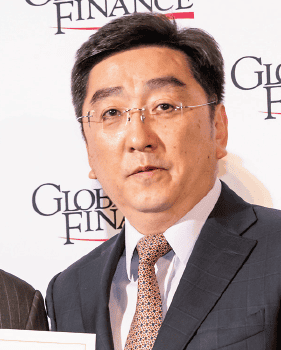
Bold Magvan, XacBank CEO |
In Mongolia, XacBank garnered attention in 2017 for its funding agreement with the Green Climate Fund (GCF), through which the GCF will provide $8.7 million in loans to finance a 10 megawatt solar plant. Mongolia is aiming to generate 30% of its power using renewable energy by 2030.
XacBank was the first Mongolian bank to develop a mobile-banking app. It has been conspicuously on the radar of international investors; it placed bonds on the Luxembourg exchange and attracted National Bank of Canada as a shareholder.
In 2016, the Central Bank of Azerbaijan named Pasha Bank “leader bank in the field of non-cash payments.” The bank, which operates 6 business centers across the country, recently introduced an electronic identity card that facilitates the use of banking products on a computer or smartphone. Pasha is the country’s leading private bank in terms of total equity, and boasts a 19.9% Tier 1 capital adequacy ratio.
In Armenia, Ardshinbank enhanced its digital credentials by launching the ArCa-Mir payment card—which can be used throughout the Russian Federation as well as Armenia—in a bid to boost national payment systems through its ATM network.
The move underscores the thrust of Ardshin’s business model toward catering to SMEs’ needs. Ardshin last year won the support of Citi and the Asian Development Bank when it signed a $25 million trade-finance club loan.
Afghanistan’s Azizi Bank is the country’s largest commercial banking group and has grown its operations exponentially. It was founded in 2006 with $7.5 million in equity capital and has since ballooned to $80 million.
The bank accounts for around one-third of loans disbursed in Afghanistan and has innovated with its streamlined Green Channel system, which allows for cash withdrawals and other services using point-of-sale devices and incorporates biometric technology.
Azizi is pushing for greater financial inclusion in Afghanistan through agent-based banking services in an effort to reach out to unbanked Afghanis door to door.
In Kazakhstan, Forte Bank is working through a hangover of NPLs, which stood at a hefty 25.8% of total loans last year. The good news is that most of these loans were made before 2014, and delinquencies on loans disbursed over the past three years are relatively low, at 5.8.
The bank enjoys a diverse funding base, a deepening deposit pool and a stable funding ratio of 150% at the end of 2017. It grew its assets by 17.7% last year and, has one of the local market’s highest current liquidity coverage ratios, at 214%.
In Tajikistan, Dushanbe-headquartered Orienbank has been a pioneer, initiating internet-banking services in the country as far back as 2006 and closing the country’s first syndicated loan in 2011. Profits fell 15% in 2016, but the bank’s position was strengthened by a 40% rise in its credit portfolio and a 7% rise in deposits.
Last year, Uzbekistan’s Asia Alliance Bank formulated a medium-term development strategy, a core pillar of which is to diversify the bank’s loan portfolio toward retail and SMEs and to modernize risk-management methods. The bank also aims to expand its credit lines with multilateral development banks, and enhance its corporate governance and fiduciary duty.
In April, Asia Alliance Bank introduced mobile banking, enabling customers to convert Uzbekistan so’m to US dollars using Visa Exchange and Union Pay cards.
Kyrgyzstan’s Demir Bank serves around 225,000 customers and has been in business since 1997, operating via 13 branches, 14 outlets and 8 exchange offices. Demir is a participant in the international payments system via its membership in the MasterCard and Visa networks.
Last year the bank signed a $3 million loan with the Russian-Kyrgyz Development Fund with proceeds to be disbursed to finance leasing and letters of credit for the purchase of equipment by SMEs.
Best Banks In Asia-Pacific 2018
Regional Winner – DBS Bank
| Country | Bank |
|---|---|
| Afghanistan |
Azizi Bank |
| Armenia |
Ardshin Bank |
| Australia |
Westpac |
| Azerbaijan |
PASHA Bank |
| Bangladesh |
Dutch Bangla Bank |
| Brunei Darussalam |
BIBD |
| Cambodia |
ABA Bank |
| China |
China Construction Bank |
| Hong Kong |
The Bank of East Asia |
| India |
State Bank of India |
| Indonedia |
Bank Rakyat Indonesia |
| Japan |
MUFG |
| Kazakhstan |
Forte Bank |
| Kyrgyzstan |
Demir Kyrgyz International Bank |
| Macau |
OCBC Wing Hang |
| Malaysia |
Maybank |
| Mongolia |
XacBank |
| Myanmar |
CB Bank |
| Nepal |
Siddhartha Bank |
| New Zealand |
ASB Bank |
| Pakistan |
Habib Bank |
| Philippines |
Security Bank |
| Singapore |
OCBC |
| South Korea |
Shinhan Bank |
| Sri Lanka |
National Development Bank Sri Lanka |
| Taiwan |
Cathay United |
| Tajikistan |
Orienbank |
| Thailand |
Bangkok Bank |
| Uzbekistan |
Asia Alliance Bank |
| Vietnam |
Saigon Hanoi Bank |



